Our Korean-Australian food scene is utterly unique, and this new restaurant is no exception
Doju serves a calamari starter, but not as you know it. And that’s just the beginning.

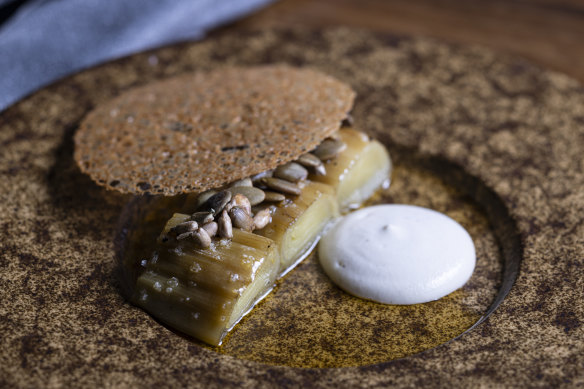
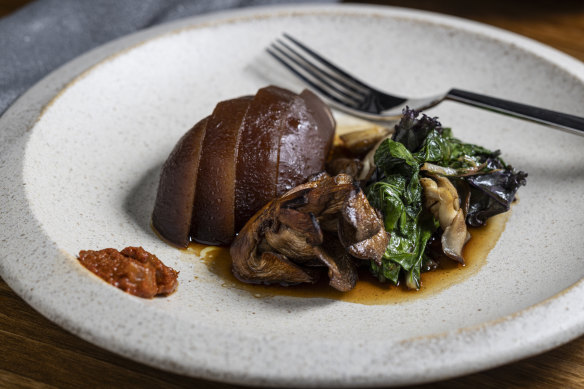
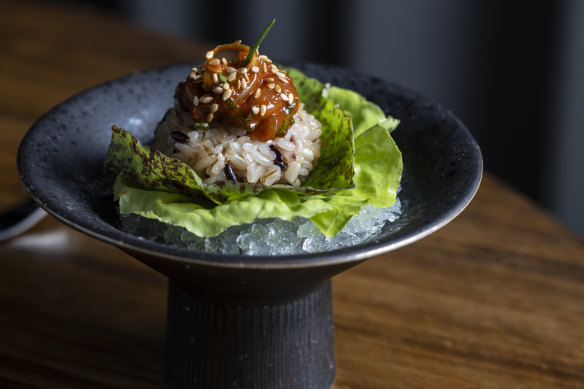
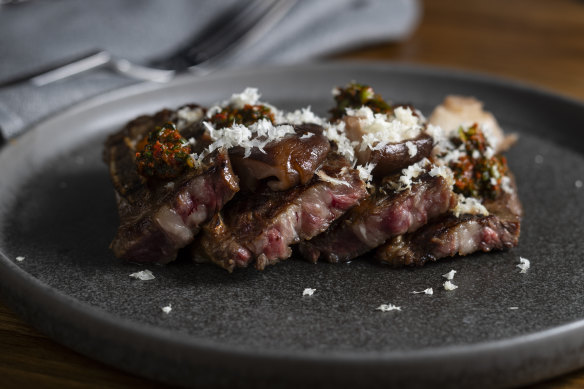
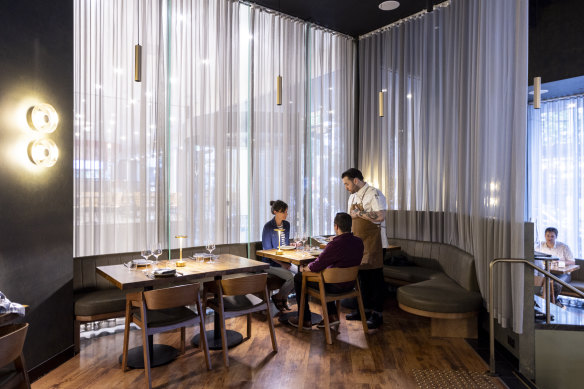
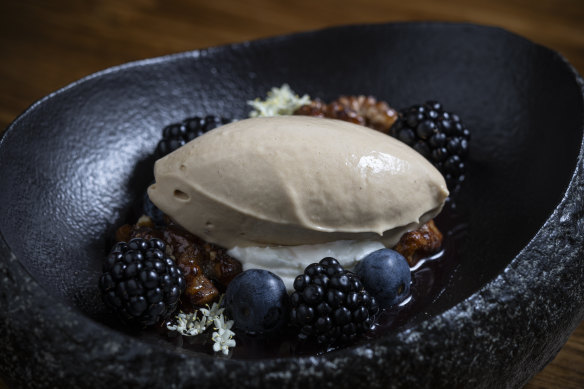
Korean$$
I made friends with kohlrabi in lockdown when I was delivering food to my parents’ doorstep. On their list each week, “2 kohlrabi”. What do you do with it? “Oh, we put it in salad, or Dad cuts it and eats it like a pear,” Mum told me. “You can boil or roast it, too.”
I started buying the brassica for myself. Round, hard and pale-green, kohlrabi is a grapefruit-sized cousin of cabbage. Peppery when raw, creamy when cooked, it’s a handy veg to have around.
Korean chef Mika Chae thinks so, too. He didn’t grow up with kohlrabi in Jeollanam-do in his homeland’s far south, but his cooking at Doju, open since December, is built on ingredients from small-scale Victorian growers. On a pilgrimage to Coburg Farmers Market, not only did the kohlrabi look good, but Chae also perceived its similarity to daikon, a radish commonly braised with hock to make jokbol, sticky pork with a tart finish.
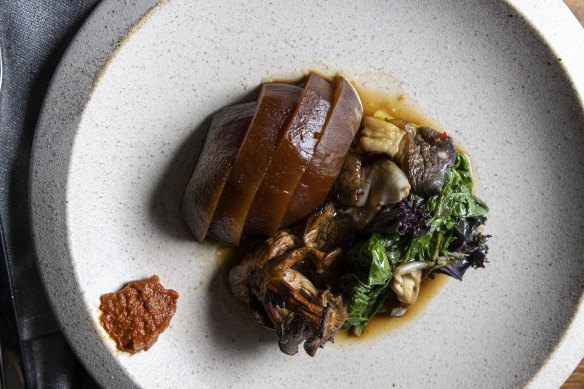
For the vegetarian main course at Doju, the first-time restaurateur omits the pork, slowly cooking kohlrabi in ganjang, a Korean soy sauce, plus cinnamon, star anise, ginger and sake. The vegetable becomes burnished-brown, meaty and succulent and is served with oyster mushrooms.
In jokbol, the daikon isn’t actually eaten: it just lends its qualities to the pork. Here, the supporting player becomes the hero: no waste, no pig. It’s a subtle, beguiling dish ($38) that I appreciated more once I understood its backstory.
In that, I think it points to an aspect of Doju that isn’t quite resolved: this is a restaurant with big ideas that aren’t always showing up on the plate. That’s not to say the food isn’t good, just that it will get better as Chae finds more courageous ways to create a Korean-Australian cuisine.

One starter is called “Salted calamari, seasoned rice, Geraldton wax” ($9). Say “calamari” to most people in Melbourne and they’ll probably picture something fried. This calamari is raw, a spin on Korean salt-preserved seafood called jeotgal.
Doju uses exceptional calamari from Corner Inlet in Gippsland, cured very lightly, then marinated with fish sauce and sesame oil. Served over rice and lettuce as a wrap, it’s an amazing morsel: the seafood is clean, gelatinous, even better perhaps than traditional jeotgal, which is a technique to preserve protein rather than highlight its special qualities. But if you’re expecting calamari rings, the dish might catch you off-balance.
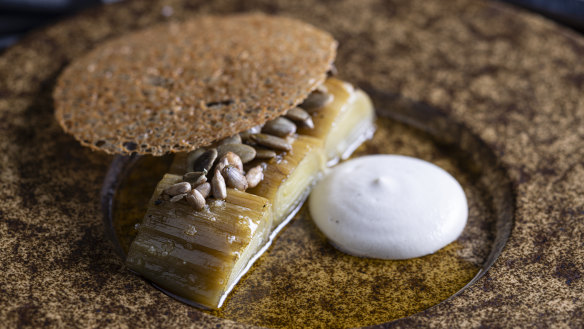
More straightforwardly, leek is wood-charred until its sweetness bubbles out in a kind of smoky vegetable caramel ($22). It’s served with cashew cream, brown butter and a crisp disc of chicken skin to create a flavour-flexing dish that would sit happily in a trendy wine bar.
Like many Korean chefs working in Australia, Mika Chae didn’t arrive here as a cook. Jungeun Chae from two-hat Chae in Cockatoo studied art; Sangsoo Kim, from one-hat James in South Melbourne, fell into cooking after being a kitchenhand. Mika Chae was doing army service in South Korea when he saw a passenger plane overhead, contemplated the wide world and ended up in Melbourne, where his first adventure was delivering pizza.
All these chefs have a Korean food repertoire to draw upon, but they haven’t trained in it. To varying degrees, they’re reaching back into memory. This curious context offers an opportunity for Melbourne’s Korean food to be utterly unique. Doju is set to be a leading example.
Related Article
Cooking seduced Mika Chae in Melbourne; he did stints at Sezar and Attica before moving to Tasmania, working his way up to head chef at Grain of the Silos in Launceston. Chae learned to weave his menus with crop cycles and cooked his way through whole pigs and cows. He’s returned to Melbourne to string his passions together: diverse Korean food styles, connections with farmers, a love for the dynamism of this city.
Doju has experienced hands on the floor, so dining here feels fresh but not shaky. The look is chic, maybe a little corporate: flowing curtains, accents in olive green and black marble, a discrete mezzanine and lively counter-seating mean the restaurant can do legal-district poise as well as night-time fun.
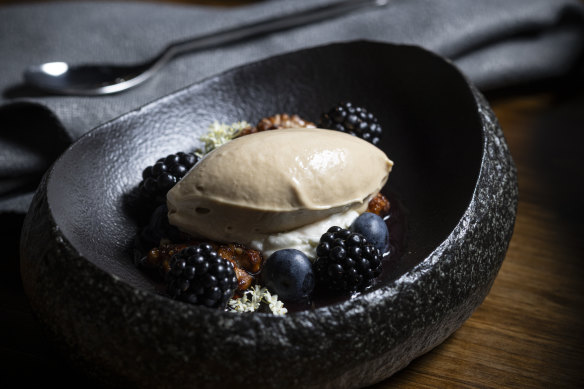
Some dishes are so wonderful they outshine any need for narrative. Roasted soybean powder (usually scattered over the glutinous rice cakes known as injeolmi) is infused into ice-cream to make a toasty scoop that’s served with preserved rhubarb and candied walnuts. It brings together Korea and Melbourne in a stellar dessert that’s also a sign of promise.
The low-down
Vibe: Elegant and warm contemporary Korean
Go-to dish: Ganjang-braised kohlrabi ($38)
Drinks: The wine list is cleverly organised by weight (“light and bright”, “deep and dark”) but you could easily match your meal to the cocktails. Bar manager Chris Litten’s wonderful mixed drinks incorporate fermented ingredients.
Cost: About $180 for two, excluding drinks
This review was originally published in Good Weekend magazine
Continue this series
Your March hit list: Hot, new and just-reviewed places to check out, right nowUp next
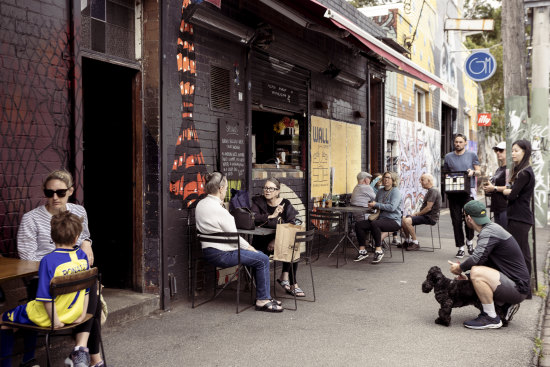
- Review
Melbourne icon review: This timeless cafe celebrates 25 years and seven million lattes
When Wall Two 80 opened in 1998, almonds and oats were as yet unmilked and no one had a labradoodle.
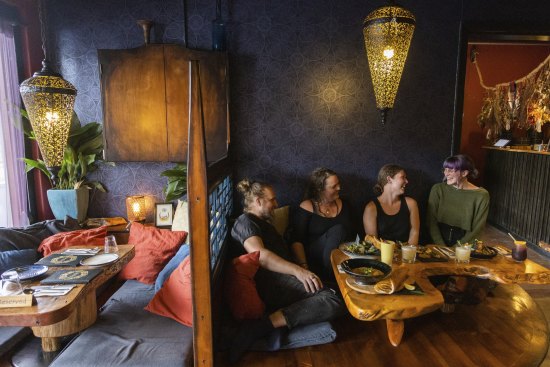
- Review
Teepee, ‘stress-reducing’ coffee: This haven in the hills is not your usual Melbourne cafe
The menu leans Indian but among the dhal and dosas there’s scrambled eggs and dolmades, vegan desserts and medicinal coffees.
Previous
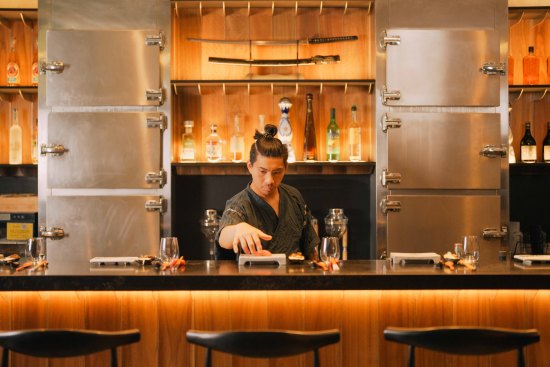
Rule-breaking omakase pop-up Ronin is now a permanent restaurant
The upper echelons of Japanese dining aren’t always about fun. But Ronin is out to change that. Its unconventional culinary mash-ups are just the beginning.

